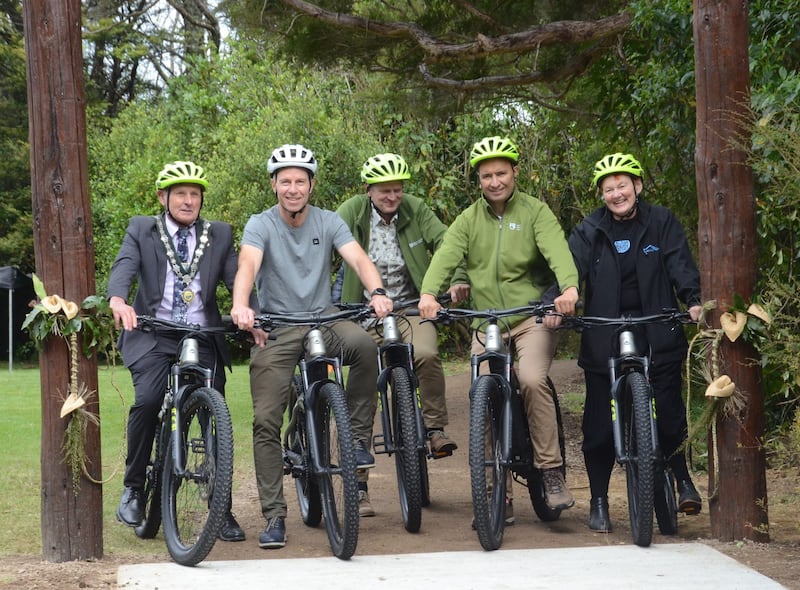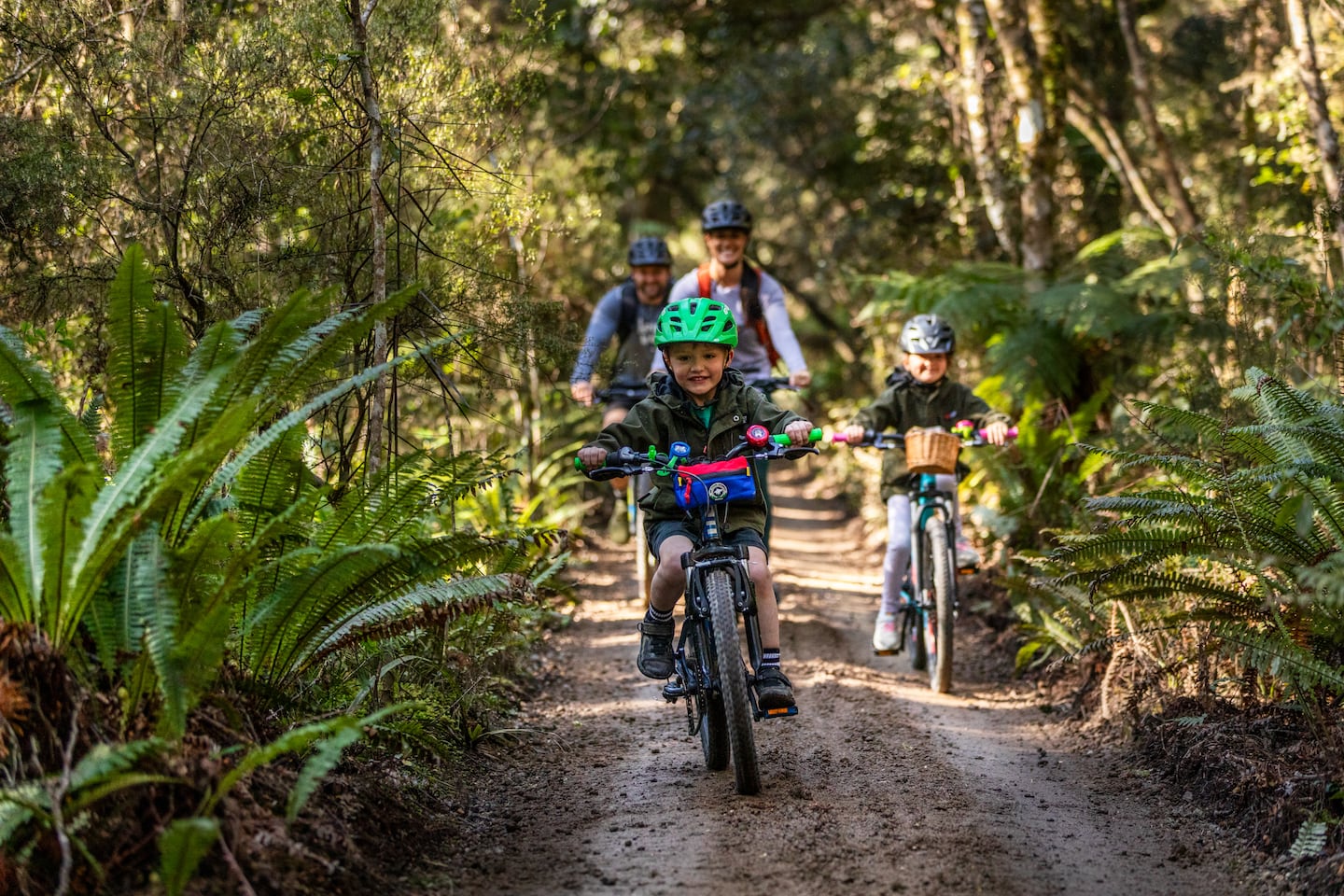Riders and walkers will weave through the forest habitat of long-tail bats and native gecko in a new trail inspired by the insights of local iwi.
Ngāti Rangi pou ārahi Helen Leahy says the iwi is excited to see the first stage of Te Ara Mangawhero brought to life.
The 11.4-kilometre loop on Mt Ruapehu, opened on Friday, will eventually become a 21.4km section of the Mountains to Sea Ngā Ara Tūhono Great Ride taking cyclists and walkers through two National Parks, from the top of the mountain, along the Whanganui River to the Tasman Sea.
Leahy says the trail is a phenomenal ride through black beech and rimu-kamahi forest, with the chance of sighting endangered whio, short and long-tail bats, native geckos and precious plants, including orchids, mistletoe and te pua o te Reinga (the flower of the underworld).
“Te Ara Mangawhero is meant to be walked, to be biked, to be explored. Riders will navigate an amazing back-country experience through pristine sub-alpine habitats.”
Leahy said the new trail “uplifts and celebrates” the House of Paerangi – Ngāti Rangi descendants and community – and affirms their rights to care for and protect Te Ao Tūroa, the natural world.
Andrew Tripe, chair of the newly established Ngā Ara Tūhono Mountains to Sea Charitable Trust, thanked the iwi for its cultural leadership and for ensuring the trail reflects the historical and spiritual significance of the rohe.
He said Ngāti Rangi had been involved in the kaupapa for more than a decade, from initial discussion and active participation in the original working group, contributions to the Tongariro National Park Management Plan change process, involvement in planning processes and leading detailed trail design and construction methodology.
The trail had been in the making since former Prime Minister John Key announced the vision for a national cycleway which evolved to become the Great Rides of New Zealand.
Key cut the ribbon to open stage one of the Ruapehu-Whanganui cycle trail in Ohakune in 2010 and six years later announced funding to extend the Mountains to Sea trail from Tūroa to Ohakune.
But Leahy said it wasn’t until July last year that the first earth was turned to start “a trail we have all been waiting a very long time for.”
“To know that here we are opening the first phase of the track just over a year after a resource consent was granted is indeed phenomenal.”
Leahy said iwi believe fundamental change is needed in how maunga, awa and whenua are viewed, cared for and managed.

Their health and wellbeing must be at the forefront of decision-making, she said.
“Iwi should be leading the transformation, not waiting for processes and paperwork to be signed off, for decisions to be made by others, when we know the solutions lie in our own hands.
“We look forward to a future where iwi-led trails are celebrated as unique to this land.”
That future was close as neighbouring iwi collective Te Korowai o Wainuiārua collaborated in work to complete the trail section Te Hangāruru, connecting Horopito and National Park village.
“There will be other iwi with whom we may look to connect to – whether that be linking with Rangitāne for Te Āpiti (Manawatū Gorge) trails or Taranaki for Mangamahoe,” Leahy said.
“It will be a great day when the whakapapa shared by iwi around Aotearoa is strengthened through connections by mountain bike and hīkoi as well.”
Leahy said Te Ara Mangawhero provided an opportunity for hope, employment and growth in a community which had been hurting from job losses, the cost of living and low incomes.
“Over these last two months, our thoughts have been with each of the 239 whānau who were dealt a savage blow when WPI (Winstone Pulp International) closed its doors.
“We want to be part of the answer – to support our rohe in helping us to grow again.”
Jobs could be created to maintain the trail, provide cultural guides and create interpretation panels and identity markers to add to the trail experience and provide natural, cultural and historical information, Leahy said.
‘Unique privilege’
Ngāti Rangi Pae Whakahaumaru team leader Te Hiiringa Tane Mareikura worked on building the trail under the wing of master trail builder Dodge Contracting.
“Their knowledge in trail building has been invaluable and we are extremely grateful for Tim and the whole Dodge team for their hard mahi,” he said.
Mareikura said working on the trail was a unique privilege.
“Being exposed to new parts of our whenua that many uri have never seen before, experiencing new landscapes and standing where our ancestors once stood has been breathtaking and surreal.”
With the work on stage one complete, the iwi was looking forward to welcoming whānau and visitors to the rohe with open arms.
“Te Ara Mangawhero will allow us as mana whenua and our visitors to connect to Koro Ruapehu, te awa o Mangawhero, the ngāhere and all its inhabitants in Te Waonui ā Tāne,” Mareikura said.
LDR is local body journalism co-funded by RNZ and NZ On Air



